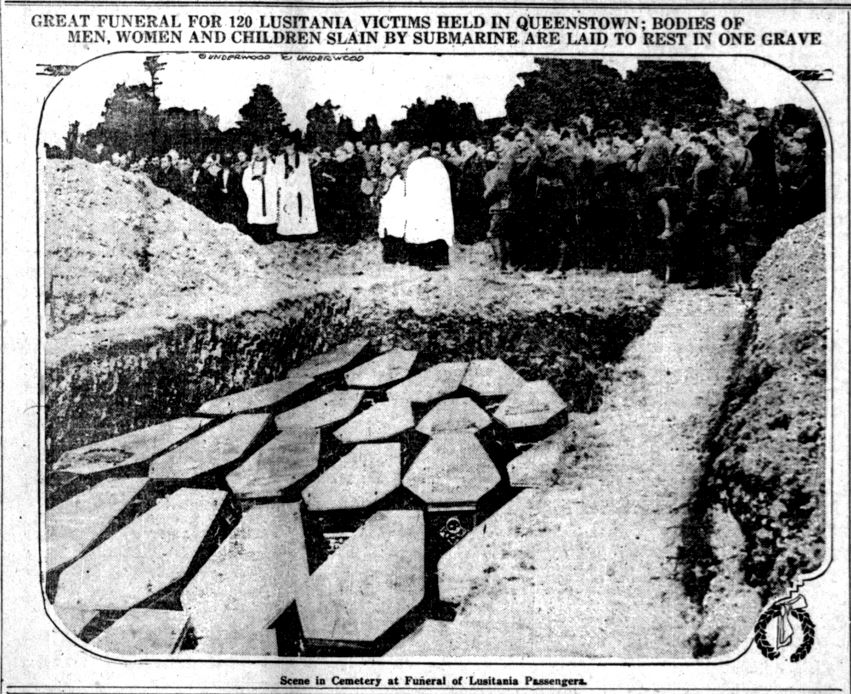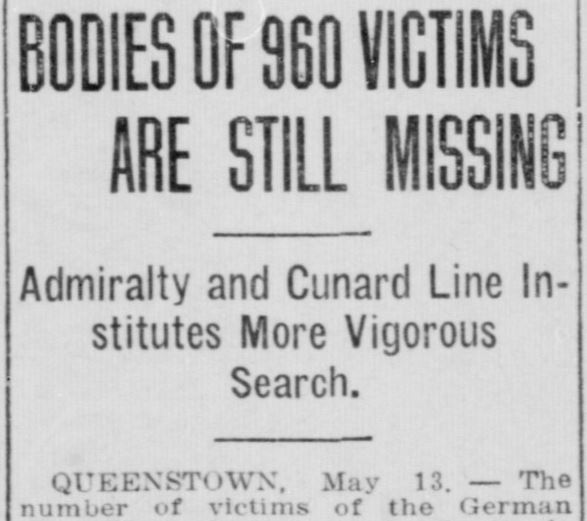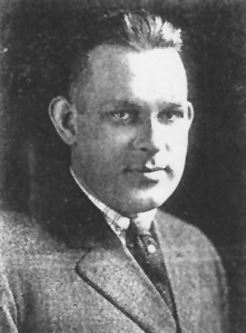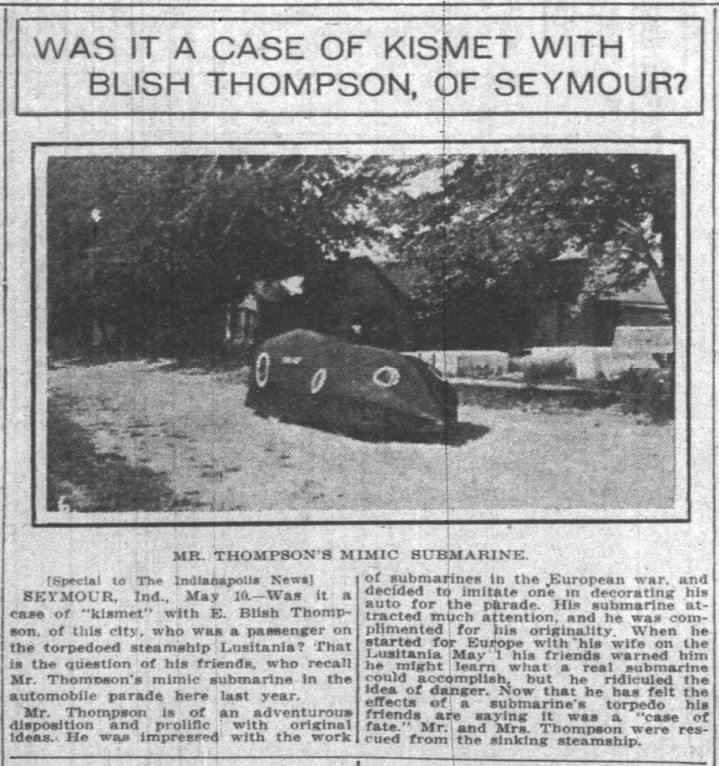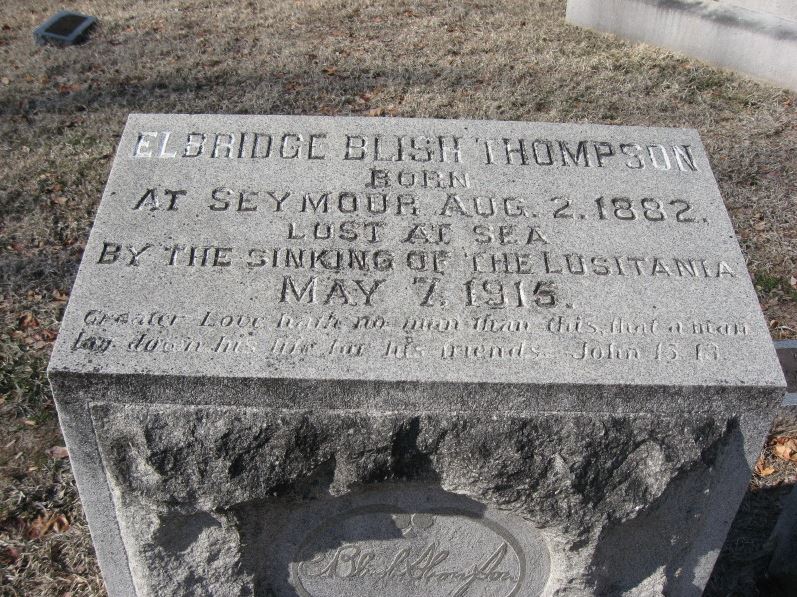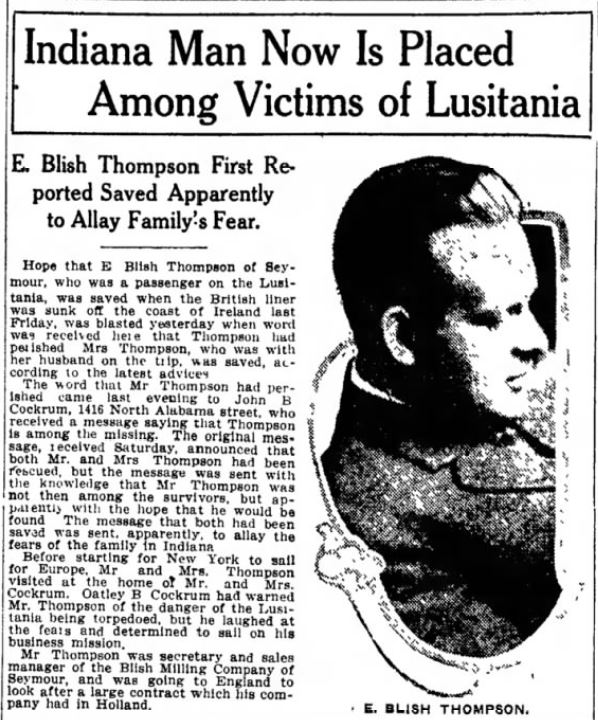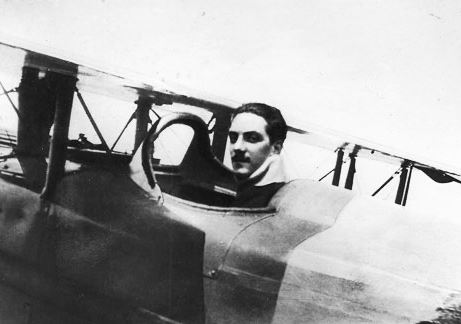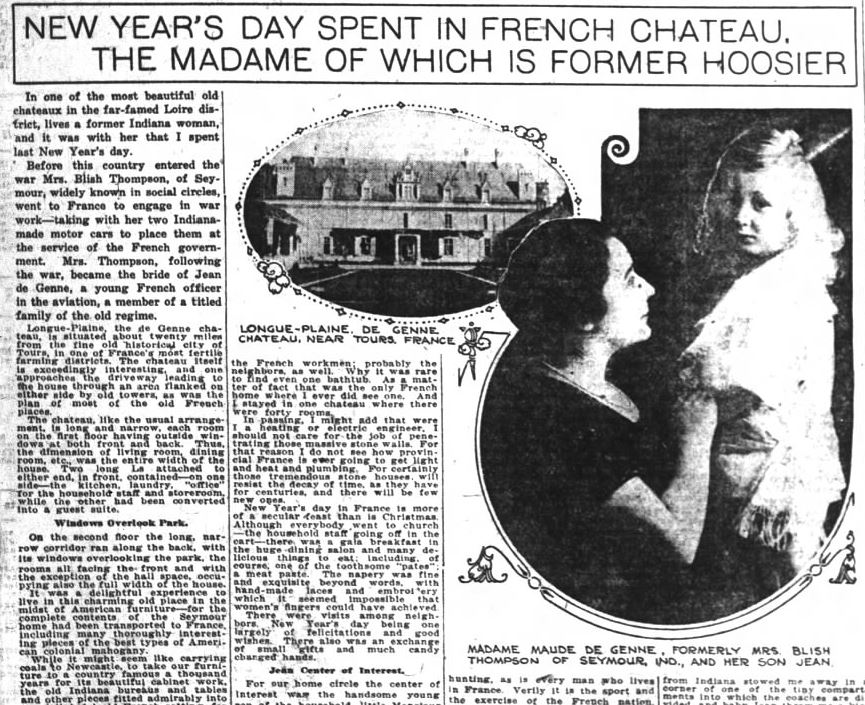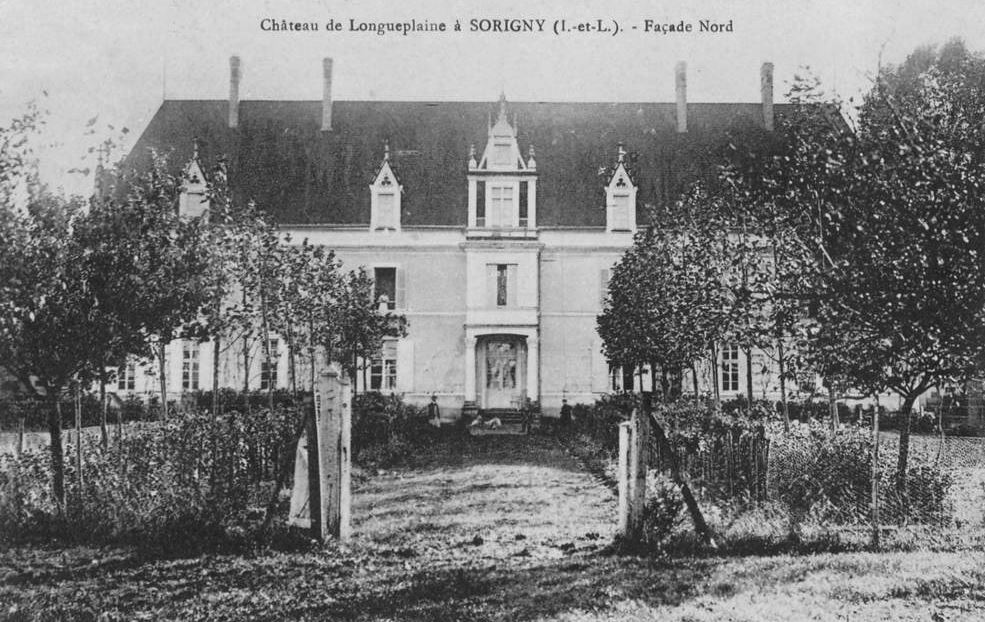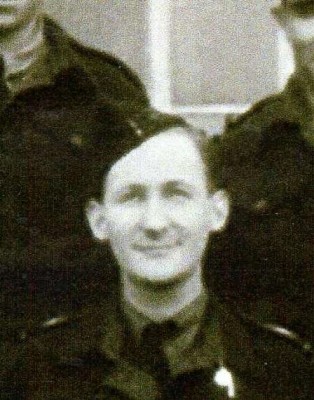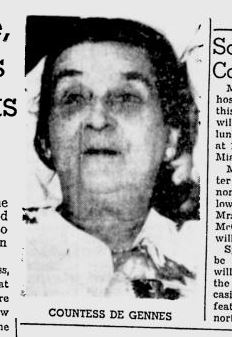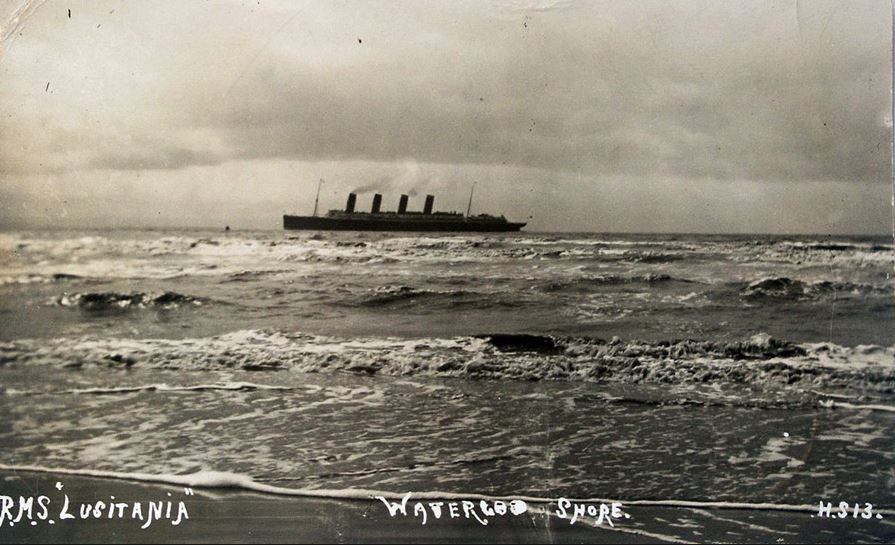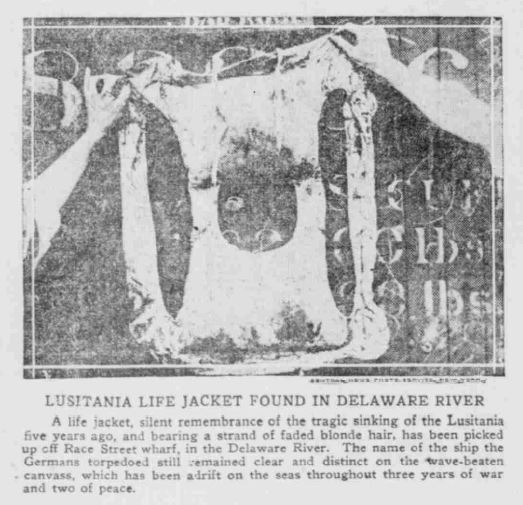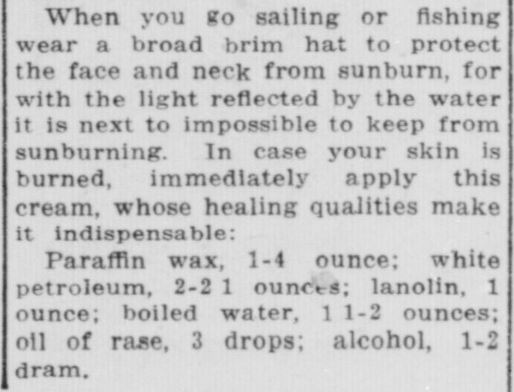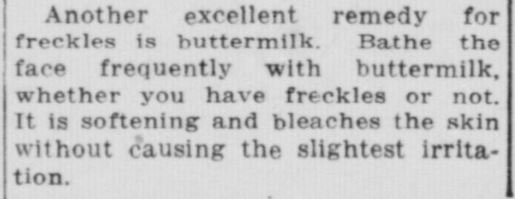From 1917 into the 1920s, Hoosier movie-goers had a chance to see one of the most controversial — and arguably infamous — silent films ever produced, The Black Stork, later renamed Are You Fit To Marry? Identified by one film historian as among the earliest horror movies, The Black Stork was based on a real and gut-wrenching medical drama from 1915.
Billed as a “eugenics love story,” the movie’s script was authored by Chicago journalist, muckraker and theater critic Jack Lait. Lait worked for news mogul William Randolph Hearst, the very man who inspired the lead figure in Orson Welles’ great 1941 movie Citizen Kane. Hearst, king of American “yellow journalism,” relished controversies, which sold newspapers and theater tickets. His film company, International Film Service, produced The Black Stork.
Many Americans today have never heard the word “eugenics,” a once-popular scientific theory spawned by Victorian understandings of evolution and heredity in the wake of Charles Darwin. The word comes from the Greek for “well-born” or “good stock” and refers to the social interpretation of scientific discoveries purporting to show how harmful genetic traits are passed on from parents to children — and how healthy children could be bred. Eugenics wasn’t strictly the same as science itself, but a social philosophy based on the discoveries of Darwin, the monk-botanist Gregor Mendel, and Darwin’s nephew, geneticist Francis Galton. Yet many scientists and doctors got involved with this social philosophy.
Once fairly mainstream, support for eugenic theories plummeted after the defeat of Hitler, its most notorious advocate. Aspects of eugenics — like the forced sterilization of repeat criminals, rapists, epileptics, the poor, and some African Americans — continued in twenty-seven American states into the 1950s and even later in a few. The last forced sterilization in the U.S. was performed in Oregon in 1981.

Indiana played an enormous role in the history of eugenics when the Hoosier State became the first to enact a compulsory sterilization law in 1907 — a law that lumped the mentally handicapped in with sex offenders, made it virtually illegal for whole classes deemed “unfit” to reproduce, segregated many of the disabled into mental hospitals, and enshrined white supremacy. Though the Indiana law was struck down in 1921, those ideas were hugely popular with many academics and activists all across the political spectrum.

Especially notable, the Indiana Eugenics Law wasn’t pushed by those designated as white racist “hillbillies.” “Poor white” Indianapolis slum-dwellers, in fact, were very much targeted by the eugenicists of the early 20th century. Promoters of these spurious theories included mainstream biologists, doctors, many reform-minded Progressives, women’s rights advocates, college presidents, even a few Christian ministers and Socialists. The list of widely-admired people who spoke out in favor of simplistic eugenic proposals included Helen Keller, Theodore Roosevelt, Woodrow Wilson, Sir Winston Churchill, Planned Parenthood’s founder Margaret Sanger, author Jack London, IU and Stanford University president David Starr Jordan, Alexander Graham Bell, and the civil rights activist W.E.B. DuBois. One of the few well-known anti-eugenics crusaders was Senator William Jennings Bryan, a Christian Fundamentalist who lost caste with Progressives in the 1920s for opposing the teaching of evolution.

Eugenics, however, was neither “liberal” nor “conservative.” Americans of all political stripes supported its basic premise — the preservation of social order and the engineering of more a “humane” society. Strong support for eugenics came from Americans concerned about the proliferation of poverty and urban crime and who sought a reason to keep certain nationalities from entering the U.S. Eugenics did not begin to go out of favor until 1935, when scientists from the Carnegie Institute in Washington demonstrated the flimsiness of other scientists’ work at Cold Spring Harbor Laboratory on Long Island. Yet even as eugenicists placed human reproduction on the level of horse- and livestock-breeding, the genetic abolition of any individual deemed “feeble-minded” — and the destruction of hereditary and sexually-transmitted diseases — was packaged as a positive goal, a social benefit to all, even to those who underwent involuntary sterilization and were occasionally killed.

Euthanasia was one component of eugenics. Alongside the “positive eugenics” campaign for “Better Babies and Fitter Families,” “negative eugenics” partly revolved around the controversial view that infants born with severe disabilities should be left to die or killed outright. In 1915, a case in Chicago plunged Americans into a heated debate about medical ethics.
That November, Dr. Harry J. Haiselden, chief surgeon at the German-American Hospital in Chicago, was faced with a tough dilemma. A woman named Anna Bollinger had just given birth to a child, John, who suffered from severe birth defects. John had no neck or right ear and suffered from a serious skin ailment, all judged to be the result of syphilis likely passed on by his father. Dr. Haiselden knew that he could save the child’s life through a surgical procedure. But since he was familiar with the conditions into which Illinois’ “feeble-minded” were thrown after birth, he convinced the child’s parents to let John die at the hospital. When the news came out that the doctor wasn’t going to perform the necessary surgery, an unknown person tried to kidnap the child and take it to another hospital. The kidnapping attempt failed and John Bollinger died.

While the Catholic Church, one of the few vocal critics of eugenics, was the only major group to initially protest the surgeon’s decision, Haiselden was soon called before a medical ethics board in Chicago. He nearly lost his medical license, but managed to keep it. Public opinion was sharply divided. Chicago social worker and suffragette Jane Addams came out against Haiselden. Short of the death penalty for murder, Addams said, no doctor had the right to be an unwilling person’s executioner. “It is not for me to decide whether a child should be put to death. If it is a defective, it should be treated as such, and be taught all it can learn,” she added.
Many of Haiselden’s critics, such as Addams, pointed out that if eugenicists had had their way, they would have killed some of the great “defectives” in history, like Russian novelist Fyodor Dostoyevksy, French emperor Napoleon Bonaparte, children’s writer Edward Lear, and even the eugenicist Harry Laughlin himself — all of them epileptics. (Biologist Laughlin, Superintendent of the Eugenics Record Office at Cold Spring Harbor and one of the science’s greatest advocates, had suffered from epilepsy since childhood.)
Support for Dr. Haiselden, however, came from many famous social activists. Among them was Helen Keller — advocate for the disabled, a Socialist, and a eugenics supporter (at least in 1915.) Keller, who was blind and deaf since the age of one but thrived against all odds, published her views on the Haiselden case in The New Republic. She thought that children proven to be “idiots” by a “jury of expert physicians” could and perhaps should be put to death. Chicago lawyer and civil liberties crusader Clarence Darrow — who famously went up against eugenics critic William Jennings Bryan at the 1925 Scopes Monkey Trial — made no bones about his support for the surgeon: “Chloroform unfit children,” Darrow said. “Show them the same mercy that is shown beasts that are no longer fit to live.” Indiana Socialist Eugene V. Debs also supported Haiselden’s decision.


(Clarence Darrow and Helen Keller supported Haiselden.)
Harry Haiselden held onto his job, but bolstered his position and kept the firestorm of public discussion brewing by starring as himself in a silent film based on the Bollinger case. The Black Stork came to hundreds of American theaters, including many Hoosier ones. Because public health workers and eugenicists often gave admonitory lectures before and after the movie, separate showings were offered for men and women. Young children weren’t allowed to attend, but a South Carolina minister encouraged parents to bring their teenage children — so they could see what might come from sexual promiscuity, criminality, drinking and “race mixing.” Some theater bills added the catchy subtitle: “The Scourge of Humanity.”

The movie’s plot was partly fictional and not entirely based on the 1915 Bollinger euthanasia case. The Fort Wayne Journal-Gazette gave its readers the basic story line, which came with an interesting twist near the end:

The “taint of the Black Stork” was obviously bad genes and heritable diseases. Haiselden’s silent film has been called one of the earliest horror movies, though its promoters billed it as educational and even romantic in nature. It fueled the eugenics movement’s campaign about defectives but also tackled an ethical dilemma that’s still alive today: is it ever humane to kill a person without their permission, on the grounds that the victim is doomed to live a miserable life and be only a “burden on society”?
Since American eugenics was supported by known racists and would later be directly cited by the Nazis as inspiration for their “racial science,” it’s uncomfortable to look deeper into it and realize how much turf it shares with Progressivists’ real concern for the treatment of the poor — and of mothers, some of whom would have been forced to raise severely disabled children. Some Americans thought the best way to eradicate poverty and disease was to eradicate the poor themselves by restricting their right to pass on the human “germ plasm” to the next generation. Eugenics and even euthanasia became, for some, a way to avoid social reforms. “Nurture vs. nature” lost out to inescapable hereditary destiny.
The Black Stork’s title was eventually changed to Are You Fit To Marry? It ran in theaters and roadshows well into the Roaring Twenties. It’s hard to believe that eugenicists begged Americans to ask themselves honestly if they were “fit to marry.” One wonders how many Americans voluntarily abstained from having children after deeming themselves “unfit”?
Ads show that the film was screened at at least three theaters in Indianapolis (including English’s Theatre on Monument Circle) as well as at movie halls in Fort Wayne, East Chicago, Whiting, Hammond, Evansville, Richmond and probably many other Hoosier towns.

The “eugenics photo-drama” reminded Americans of the dangers that “bad” heredity posed not only to their own families, but to the nation. When The Black Stork was shown in Elyria, Ohio, just a few months into America’s involvement in World War I, it clearly drew from the well of fear-mongering that linked crime and disease to alcohol, immigration, prostitution and rumors about German traitors and saboteurs — all clear threats to Anglo-Saxon ideals. Eugenics and euthanasia, by “saving our nation from misery and decay,” clearly got hitched to the wagon of nationalist politics. Viewing The Black Stork, like supporting the war effort, became “a solemn duty.”

German scientists were promoting “racial hygiene” long before the Nazis came to power in the 1930s. Fascism’s scientists and propagandists would also draw heavily on the work of British and American eugenicists — and point to laws like Indiana’s when opponents criticized them. Racial Hygiene, in fact, was the title of an influential textbook by Hoosier doctor Thurman B. Rice, a professor at IU Bloomington, a colleague of sex researcher Alfred Kinsey, and one of the founders of IU Medical School in Indianapolis. In April 1929, Rice wrote an editorial in the Indiana State Board of Health’s monthly bulletin, entitled “If I Were Mussolini,” where he supported compulsory sterilization of “defectives.”

The Black Stork wasn’t the last film about euthanasia and eugenics. In 1941, Hitler’s Propaganda Minister, Joseph Goebbels, commissioned one of the classics of Nazi cinema, Ich klage an (I Accuse). The plot revolves around a husband who learns that his wife has been diagnosed with multiple sclerosis. He gives her a drug that causes her death, then undergoes a trial for murder. The film’s producers argued that death was not only a right but a social duty. A tearjerker, Ich klage an was intended to soften up the German public for the Nazis’ T4 euthanasia campaign, which led to the deaths of as many as 200,000 adults and children deemed a burden to the nation. (There’s some further irony that Ich klage an’s cinematic parent, The Black Stork, was based on events at Chicago’s German-American Hospital.)
Eugenics captivated Americans and Europeans for a few more decades after the Bollinger case. British writer G.K. Chesterton, a Catholic convert and a fierce opponent of eugenics, probably deserves the last word here. Chesterton called eugenics “terrorism by tenth-rate professors.”

In his 1922 book Eugenics and Other Evils: An Argument Against the Scientifically Organized State, Chesterton quipped that society has never really had all that much to fear from the “feeble-minded.” Rather, it’s the “strong-minded” who hurt society the most. Tearing into eugenics advocates in Britain, Germany and America, Chesterton spotlighted their frequent class prejudices, then skewered them brilliantly:
Why do not the promoters of the Feeble-Minded Bill call at the many grand houses in town and country where such nightmares notoriously are? Why do they not knock at the door and take the bad squire away? Why do they not ring the bell and remove the dipsomaniac prize-fighter? I do not know; and there is only one reason I can think of, which must remain a matter of speculation. When I was at school, the kind of boy who liked teasing half-wits was not the sort that stood up to bullies.
Dr. Harry J. Haiselden was involved in the deaths of at least three more disabled infants. He died of a cerebral hemorrhage while on vacation in Havana, Cuba, in 1919.
Contact: staylor336 [AT] gmail.com





































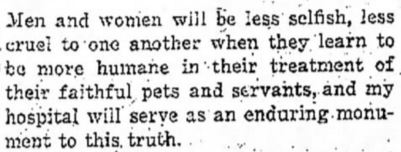 The Ogden Standard-Examiner, Ogden, Utah, February 11, 1923.
The Ogden Standard-Examiner, Ogden, Utah, February 11, 1923.









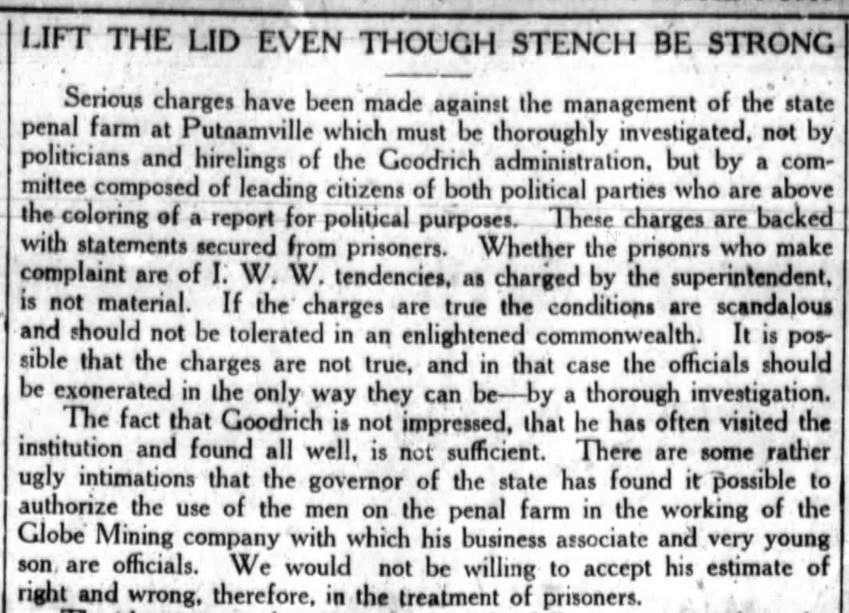






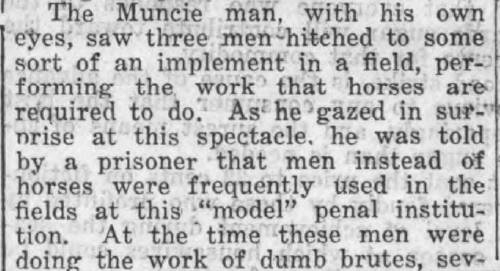 Muncie Post Democrat, August 4, 1922.
Muncie Post Democrat, August 4, 1922. 






























